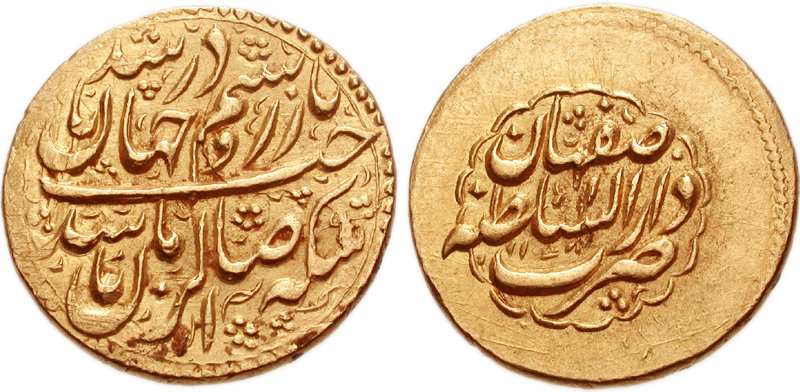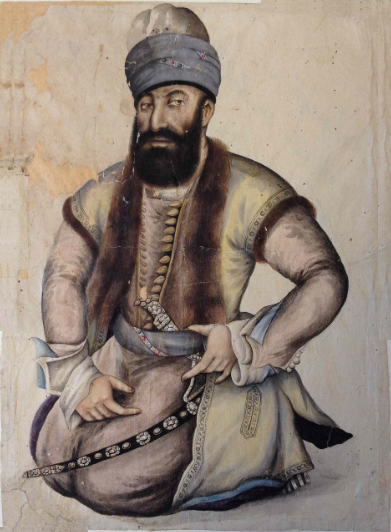|
Vakil Bath
Vakil Bath, Wakil Bath, or Wakil Hammam is an old public bathhouse (''hammam'') in Shiraz, Iran. It was a part of the royal district constructed during Karim Khan Zand's reign (1751–1779) which includes the Arg of Karim Khan, Vakil Bazaar, Vakil Mosque The Vakil Mosque ( fa, مسجد وکیل - ''Masjed-e Vakil'') is a mosque in Shiraz, southern Iran, situated to the west of the Vakil Bazaar next to its entrance. This mosque was built between 1751 and 1773, during the Zand period; however, it ... and many administrative buildings. It is located on the west side of the Vakil Mosque. The hammam was originally intended for use by the nobility and continued to be in use up until the 20th century. It has since been restored and classified as a historic monument, inscribed with the number 917 on the list of national works of Iran. References Buildings and structures in Shiraz Public baths in Iran {{Shiraz-geo-stub ... [...More Info...] [...Related Items...] OR: [Wikipedia] [Google] [Baidu] |
Shiraz
Shiraz (; fa, شیراز, Širâz ) is the List of largest cities of Iran, fifth-most-populous city of Iran and the capital of Fars province, Fars Province, which has been historically known as Pars (Sasanian province), Pars () and Persis. As of the 2016 national census, the population of the city was 1,565,572 people, and its built-up area with Sadra, Fars, Sadra was home to almost 1,800,000 inhabitants. A census in 2021 showed an increase in the city's population to 1,995,500 people. Shiraz is located in Southern Iran, southwestern Iran on the () seasonal river. Founded in the early Islamic period, the city has a moderate climate and has been a regional trade center for over a thousand years. The earliest reference to the city, as ''Tiraziš'', is on Elamite Clay tablet, clay tablets dated to 2000 BCE. The modern city was restored or founded by the Arabs, Arab Umayyad Caliphate in 693 CE and grew prominent under the successive Iranian peoples, Iranian Saffarid dynasty, Saffar ... [...More Info...] [...Related Items...] OR: [Wikipedia] [Google] [Baidu] |
Karim Khan Zand
Mohammad Karim Khan Zand ( fa, محمدکریم خان زند, Mohammad Karīm Khân-e Zand; ) was the founder of the Zand Dynasty, ruling from 1751 to 1779. He ruled all of Iran (Persia) except for Khorasan. He also ruled over some of the Caucasian lands and occupied Basra for some years. While Karim was ruler, Iran recovered from the devastation of 40 years of war, providing the war-ravaged country with a renewed sense of tranquillity, security, peace, and prosperity. The years from 1765 to Karim Khan's death in 1779, marked the zenith of Zand rule. During his reign, relations with Britain were restored, and he allowed the East India Company to have a trading post in southern Iran. He made Shiraz his capital and ordered the construction of several architectural projects there. As noted by ''The Oxford Dictionary of Islam'', "Karim Khan Zand holds an enduring reputation as the most humane Iranian ruler of the Islamic era". When following the Islamic Revolution of 1979, the nam ... [...More Info...] [...Related Items...] OR: [Wikipedia] [Google] [Baidu] |
Zand Dynasty
The Zand dynasty ( fa, سلسله زندیه, ') was an Iranian dynasty, founded by Karim Khan Zand (1751–1779) that initially ruled southern and central Iran in the 18th century. It later quickly came to expand to include much of the rest of contemporary Iran (except for the provinces of Balochistan and Khorasan) as well as parts of Iraq. The lands of present-day Armenia, Azerbaijan, and Georgia were controlled by khanates which were de jure part of the Zand realm, but the region was de facto autonomous. The island of Bahrain was also held for the Zands by the autonomous Al-Mazkur sheikhdom of Bushire. The reign of its most important ruler, Karim Khan, was marked by prosperity and peace. With its capital at Shiraz, arts and architecture flourished under Karim Khan's reign, with some themes in architecture being revived from the nearby sites of the Achaemenid (550–330 BC) and Sasanian (224–651 AD) era's of pre-Islamic Iran. The tombs of the medieval Persian poets Hafez a ... [...More Info...] [...Related Items...] OR: [Wikipedia] [Google] [Baidu] |
Turkish Bath
A hammam ( ar, حمّام, translit=ḥammām, tr, hamam) or Turkish bath is a type of steam bath or a place of public bathing associated with the Islamic world. It is a prominent feature in the culture of the Muslim world and was inherited from the model of the Roman ''thermae.'' Muslim bathhouses or hammams were historically found across the Middle East, North Africa, al-Andalus (Islamic Spain and Portugal), Central Asia, the Indian subcontinent, and in Southeastern Europe under Ottoman rule. A variation on the Muslim bathhouse, the Victorian Turkish bath, became popular as a form of therapy, a method of cleansing, and a place for relaxation during the Victorian era, rapidly spreading through the British Empire, the United States of America, and Western Europe. In Islamic cultures the significance of the hammam was both religious and civic: it provided for the needs of ritual ablutions but also provided for general hygiene in an era before private plumbing and served other ... [...More Info...] [...Related Items...] OR: [Wikipedia] [Google] [Baidu] |
Arg Of Karim Khan
The Arg of Karim Khan ( fa, ارگ کریم خان, ''Arg-e Karim Khān'') or Karim Khan Citadel, is a citadel located in downtown Shiraz, Iran. It was built as part of a complex during the Zand dynasty. It is named after Karim Khan, and served as his living quarters. It is rectangular in shape and resembles a medieval fortress. In the past, the citadel was sometimes used as a prison. Today, it is a museum operated by Iran's Cultural Heritage Organization. A public park surrounds it. History Karim Khan citadel is located at the beginning of Karim Khan Zand (Shiraz) street on the corner of the Municipality Square (Shahrdari). Karim Khan was influenced by the Safavid architecture when his government was established in Shiraz. So that after visiting Isfahan Naghshe Jahan Square, he decided to build a large square in the northern Shiraz. This field was known as Artillery Square. To the north of the square, located Divan Karim Khan Square and to its east, Vakil Bazaar and several inn ... [...More Info...] [...Related Items...] OR: [Wikipedia] [Google] [Baidu] |
Vakil Bazaar
Vakil Bazaar ( fa, بازار وکیل) is the main bazaar of Shiraz, Iran, located in the historical center of the city. It is thought that the market originally was established by the Buwayhids in the 11th century AD, and was completed mainly by the Atabaks of Fars, and was renamed after Karim Khan Zand only in the 18th century. The bazaar has beautiful courtyards, caravansarais, bath houses, and old shops which are deemed among the best places in Shiraz to buy Persian rugs, spices, copper handicrafts and antiques. Like other Middle Eastern bazaars, there are a few mosques and Imamzadehs constructed beside or behind the bazaar. See also * Iranian architecture Iranian architecture or Persian architecture ( Persian: معمارى ایرانی, ''Memāri e Irāni'') is the architecture of Iran and parts of the rest of West Asia, the Caucasus and Central Asia. Its history dates back to at least 5,000 BC ... Gallery Bazar Shiraz as seen by Jane Dieulafoy, 1881.jpg, ... [...More Info...] [...Related Items...] OR: [Wikipedia] [Google] [Baidu] |
Vakil Mosque
The Vakil Mosque ( fa, مسجد وکیل - ''Masjed-e Vakil'') is a mosque in Shiraz, southern Iran, situated to the west of the Vakil Bazaar next to its entrance. This mosque was built between 1751 and 1773, during the Zand period; however, it was restored in the 19th century during the Qajar period. ''Vakil'' means ''regent'', which was the title used by Karim Khan, the founder of Zand Dynasty. Shiraz was the seat of Karim Khan's government and he endowed many buildings, including this mosque. Specifications Vakil Mosque covers an area of 8,660 square meters. It has only two iwans instead of the usual four, on the northern and southern sides of a large open court. The iwans and court are decorated with typical Shirazi ''haft rangi'' tiles, a characteristic feature of the art and industry of Shiraz during the latter half of the 18th century. Its night prayer hall (Shabestan), with an area of approximately 2,700 square meters, contains 48 monolithic pillars carved in spirals, eac ... [...More Info...] [...Related Items...] OR: [Wikipedia] [Google] [Baidu] |
Baños De Vakil, Shiraz, Irán, 2016-09-24, DD 36-38 HDR (32585522971)
{{disambig ...
Banos or Baños ( es, baths) may refer to: *Banos, Landes, a commune in the Landes department of France *Baños de Agua Santa, a city and popular tourist destination in Tungurahua Province, Ecuador *Baños Canton, Ecuador, of which Baños de Agua Santa is the capital *Baños District, Peru *Baños, Azuay, a suburb of Cuenca, Ecuador *Los Baños, Laguna, a municipality known, among other things, for its hot spring resorts in the Laguna province of the Philippines. ;See also: *Baños de Ebro *Baños de la Encina *Baños de Molgas *Baños de Montemayor *Baños de Tajo *Baños de Valdearados *Battle of Puerto de Baños The Battle of Puerto de Baños (12 August 1809) saw a Portuguese-Spanish column led by Robert Wilson attempt to defend a mountain pass against Marshal Michel Ney's VI Corps. After a nine-hour combat, Wilson's force broke up and scattered into ... [...More Info...] [...Related Items...] OR: [Wikipedia] [Google] [Baidu] |
Buildings And Structures In Shiraz
A building, or edifice, is an enclosed structure with a roof and walls standing more or less permanently in one place, such as a house or factory (although there's also portable buildings). Buildings come in a variety of sizes, shapes, and functions, and have been adapted throughout history for a wide number of factors, from building materials available, to weather conditions, land prices, ground conditions, specific uses, prestige, and aesthetic reasons. To better understand the term ''building'' compare the list of nonbuilding structures. Buildings serve several societal needs – primarily as shelter from weather, security, living space, privacy, to store belongings, and to comfortably live and work. A building as a shelter represents a physical division of the human habitat (a place of comfort and safety) and the ''outside'' (a place that at times may be harsh and harmful). Ever since the first cave paintings, buildings have also become objects or canvasses of much artistic ... [...More Info...] [...Related Items...] OR: [Wikipedia] [Google] [Baidu] |



